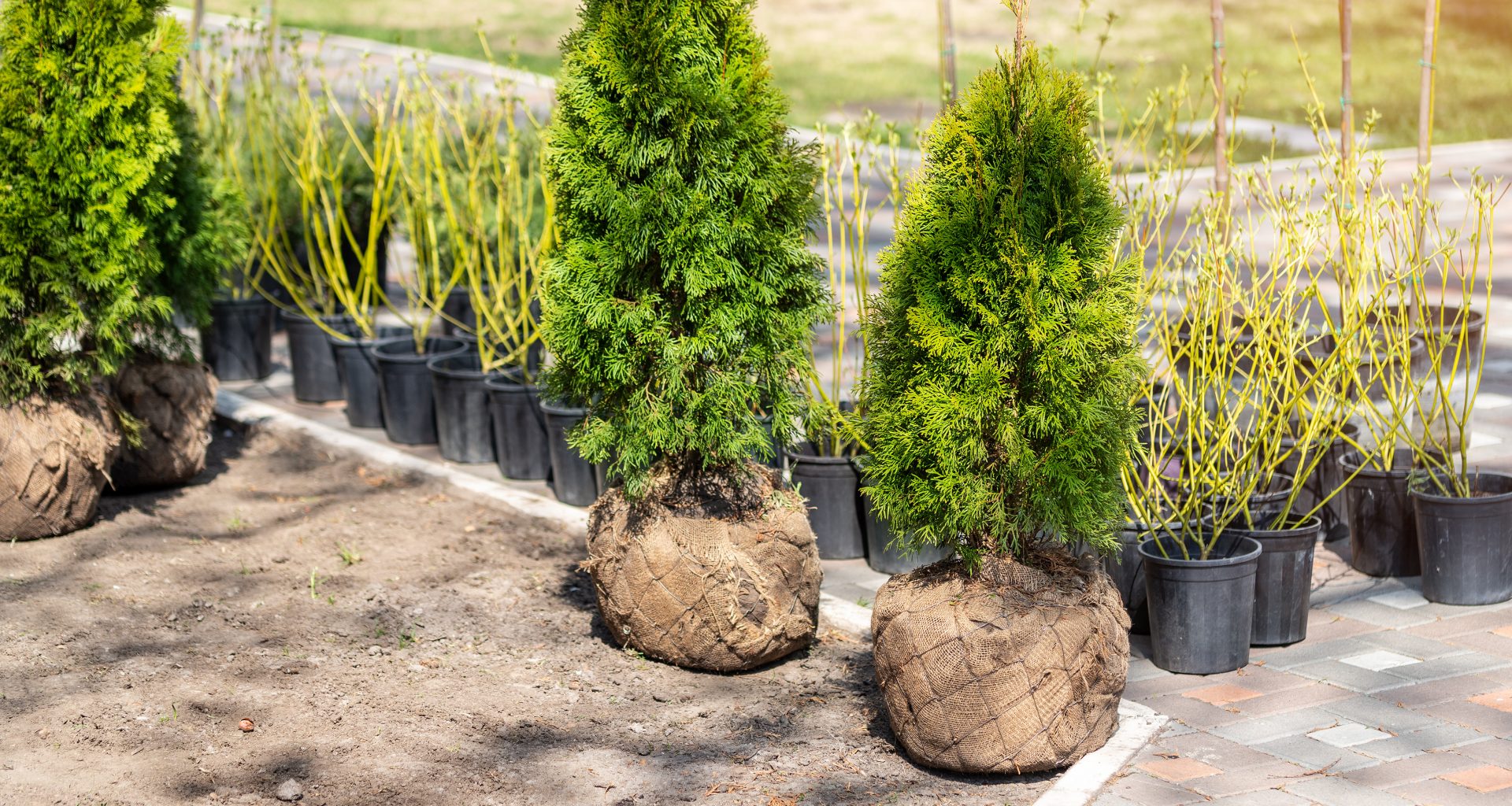If you need a cheap, easy way to create a boundary in your garden, look no further than root ball hedging. Hedges are generally a great addition to tidy up a garden whilst giving it some extra life. They tend to be inexpensive and quick making them great for even beginner gardeners. There are a number of different types, from Cherry Laurel to root ball Box hedging. You may be wondering what type to pick, when to plant hedges, and how to care for them.
This article will take you through the basics of root ball hedging, answering these important questions:
- What is root ball hedging?
- When should you plant hedges?
- How do you plant hedging?
This article will help you figure out if it’s right for your garden. Read on for all of our advice and tips!
What Is Root Ball Hedging?
First, you may be wondering what root ball hedging is. It is an evergreen type of plant which grows tall and fast. They are first grown in fields and then harvested in November each year to be sent to customers.
The name comes from the fact that the roots of the plant are kept in a ball of soil tied in hessian. This protects the roots from damage during transport.
There is a whole range of evergreen hedging on the market. Cherry Laurel is very common. Its dark, shiny leaves look beautiful and grow thick, making it ideal for adding privacy to a garden. Yew grows a bit shorter and is ideal if you want to try your hand at topiary or curved hedges. Finally, root ball Box hedging grows very short and slow. However, it’s very thick and can withstand even harsh weather conditions. If you live in a cold climate, this might be ideal for your garden.
What Are The Alternatives?
If root ball hedging doesn’t sound right for your garden, there are some great alternatives. There are a few problems with it, especially root ball box hedging, which is at risk of catching box blight and damage from box moth caterpillars, amongst other things.
Instead, you can choose from other types of hedging like bare root, pot grown, and cell grown. These are just different root types, which all have their advantages and disadvantages. It’s worth shopping around to check out these options to see what’s best for your garden!
When Can You Plant Root Ball Hedging?
As we mentioned above, these types of hedges are ready for purchase around November each year. You can usually buy them from most suppliers until spring.
Most experts recommend they should be planted as soon as you get them. Don’t store them for more than a few days, keep them well watered and away from extreme weather, and get them in the ground as soon as possible. If the ground is frozen or waterlogged, wait a few days to plant, but store the hedging properly to protect it.
If you need to plant a hedge during the winter or summer, it’s worth looking at root ball Box hedging. This is generally available to buy throughout the whole year.
Next, we’ve got a few tips for you on how to plant your hedging.
How To Plant Root Ball Hedging
Before you plant your hedging, it’s important to note any advice from the supplier and prepare your area properly. Use compost or soil from a garden center to add nutrients to the planting zone. This will give your hedging the best chance to thrive from the start. Before putting the plants in the ground, soak the area with water so it can provide plenty of nutrients to the roots of the hedging.
Root ball hedging comes with hessian around the roots, which will rot down in the earth when planted. Leave this on.
After planting, taking care of your hedging is vital. Check out our tips on how to do this in the next section.
Caring For Your Hedges
One disadvantage of root ball hedging is that it can die quickly if not given the proper care. As we’ve mentioned already, plant the hedging as soon as possible after delivery. This will ensure it stays healthier for longer.
Water your hedging often, and in the winter months especially you need to protect the roots from frost. Watering frequently, leaving fallen leaves on the ground, and using mulch are all great ways to keep your plants safe in winter.
Finally, regular pruning will stop your hedge from getting out of control and encourages new stem and leaf growth. You can do this yourself if you’re confident, or get a gardener in to help you out if you need some extra advice.
Conclusion
So, root ball hedging is quite an easy and inexpensive way to add some life and privacy to your garden. Smaller root ball Box hedging is great for features and provides a hardy addition to your garden through harsher weather. Importantly, check out the other options available to make sure it’s right for your garden!







1 comment
Hedge trees look like a mess of twisted and mangled sticks, but they are actually trained to grow in an intricate pattern known as root ball hedging. Root ball hedge plants have been used for centuries because it provides privacy from both people on the outside looking in, while also offering protection against intruders (such as robbers) trying to get inside your home or property. In some cases though, you may want more than just foliage walls that were created by other types of bushes such at roses or berry-producing shrubs; this is where root balls come into play!